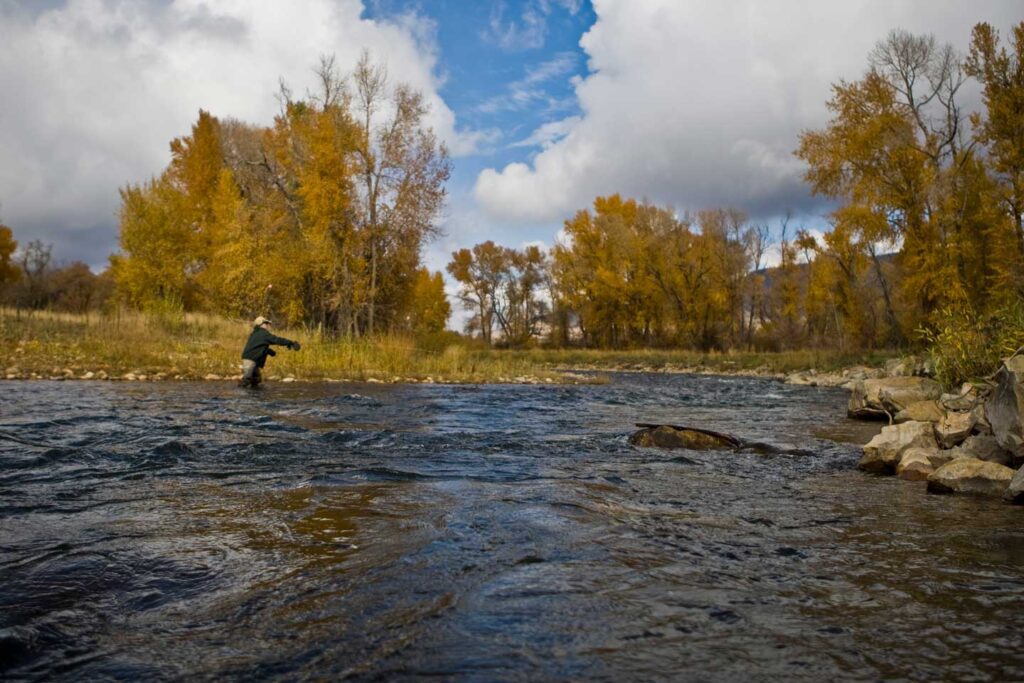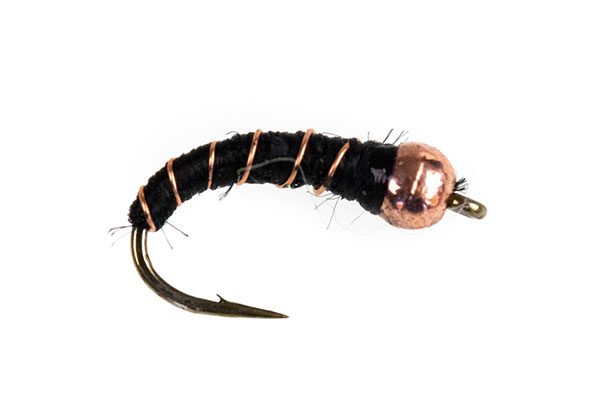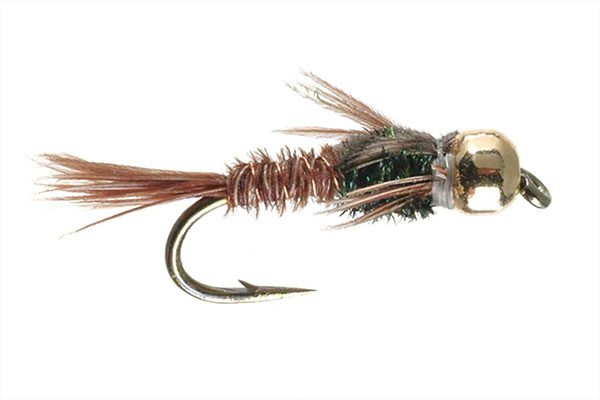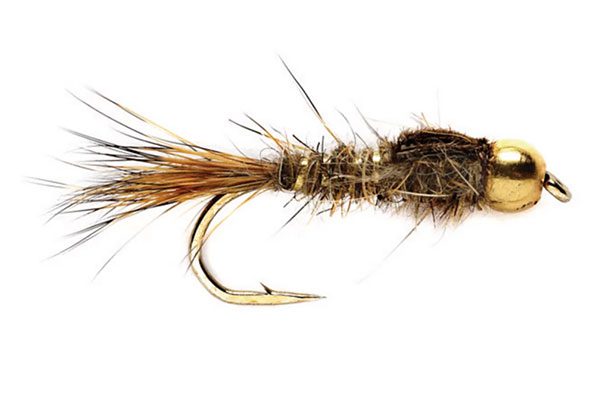Introduction
Welcome to the exciting world of Provo River fly fishing! Nestled in the heart of Utah, the Provo River is a prime location for anglers of all experience levels, especially beginners. The river’s diverse ecosystem and vibrant hatches offer plenty of opportunities for success. However, one of the most critical aspects of a successful fishing trip is selecting the right flies. But don’t worry! Choosing the perfect fly doesn’t need to be complicated. This guide will walk you through the essentials, from understanding hatches to selecting the best patterns, so you can enjoy a fruitful fishing experience on the Provo River.

The Provo River: What Makes It Special
The Provo River is divided into three sections: the Upper Provo, the Middle Provo, and the Lower Provo. Each section has its unique characteristics, but for beginners, the Middle Provo is particularly favorable. This section offers accessible waters, a healthy fish population, and varied hatches, making it an ideal location to learn and practice your fly fishing skills. The Middle Provo is also relatively easier to wade and has plenty of access points, meaning you won’t have to worry about difficult terrain while focusing on your fishing techniques.
The Provo River is teeming with fish, including brown and rainbow trout, making it a popular spot for anglers. Brown trout, in particular, are known for their wariness, which can present a challenge, but also make them incredibly rewarding to catch. Rainbow trout, on the other hand, are more eager to strike and are often found in the river’s faster-moving waters. The Provo river is famous for its clear waters and active insect hatches, creating ideal conditions for fly fishing enthusiasts.
Understanding Insect Hatches
In the world of fly fishing, one crucial concept to grasp is “matching the hatch.” In simple terms, this means choosing flies that resemble the insects naturally present in the water, ensuring your fly looks like a potential meal for the fish.
Provo River hatch chart and timing are vital tools in this process. Understanding when specific insects hatch throughout the year will help you select the right fly. Here’s an overview of the key seasonal insect hatches on the Provo River:
- Spring:
During the spring months, the Provo River sees an influx of Blue Winged Olives (BWOs) and midges. These two insects are particularly important to note. The BWOs typically hatch in the early mornings, with fish actively feeding on them. Midges are smaller but present in high numbers, especially during cooler periods. The key to fishing successfully during this season is paying attention to subtle hatches. If the fish are rising to small insects, you may want to focus on small dry flies like Parachute Adams or Griffith’s Gnat to imitate BWOs and midges. - Summer:
As the temperature rises, the river’s insect life becomes more abundant. During summer, Pale Morning Duns (PMDs) and caddisflies emerge. The caddisfly hatch, in particular, can be explosive, with fish rising to the surface to snatch these adult insects. Terrestrial insects like ants, beetles, and grasshoppers are also active during summer and make up a large portion of fish diets. The Elk Hair Caddis is an excellent dry fly to match the caddisfly hatch, and grasshopper patterns can be very effective in attracting larger fish, especially during warm, dry months. - Fall:
Fall hatches resemble those of the spring. You’ll still see Blue Winged Olives (BWOs), and terrestrials like ants and beetles continue to be available. The cooler temperatures in the fall often make fish more aggressive, so they’ll be actively feeding. Streamer fishing during the fall can also yield great results, especially as fish prepare for the winter months. Use larger streamers like the Woolly Bugger to mimic small baitfish or sculpins. - Winter:
In winter, the Provo River becomes much quieter, but the fish are still feeding, mostly on midges. The midge hatch is consistent throughout the winter months, and using small midge patterns, such as Zebra Midges, is highly effective. During this time, fish often feed slower, so it’s important to approach them with patience and a careful presentation. Nymphing with small, subtle flies is often the best way to go.
As the insects hatch, the fish adjust their feeding behavior. If you’re in the right spot at the right time, the fish will be actively feeding on these insects, making it easier for you to hook them with the right fly.
Top 7 Beginner-Friendly Flies That Work on the Provo
When it comes to choosing flies for the Provo River, it’s helpful to keep things simple. As a beginner, focus on 2-3 types of flies per trip to avoid overwhelming yourself. Here are seven Provo River fly patterns that will serve you well:
Nymphs
- Zebra Midge

This is a must-have in your fly box, especially during winter and early spring. Its simplicity and effectiveness make it a top choice for nymphing. The Zebra Midge is particularly useful when fish are feeding deep, and it works great in both slow-moving and faster water. Try it with a dead drift presentation for the best results. Shop
- Pheasant Tail Nymph

A versatile nymph that imitates various insect larvae, including mayflies. The Pheasant Tail works well in different river conditions, from riffles to deeper runs. It’s an excellent choice when fish are feeding on mayfly nymphs, which are common in the Provo River year-round. Shop
Hare’s Ear Nymph

A classic pattern that mimics the natural nymphs in the river. It’s great for imitating a variety of food sources, including caddis larvae and mayflies. The Hare’s Ear nymph is particularly effective during the warmer months when aquatic insects are abundant. Shop
Dry Flies
- Parachute Adams
This dry fly is a go-to pattern for imitating a range of hatching insects, especially Blue Winged Olives (BWOs). Its parachute design makes it easy to see on the water, which is great for beginners. It’s a versatile fly that can be used year-round, especially when the BWOs hatch in the spring and fall. - Elk Hair Caddis
A popular dry fly, perfect for imitating adult caddisflies during their hatch. The Elk Hair Caddis is great when fish are feeding on caddisflies, which are abundant during the summer months. The buoyancy of this fly allows it to float well on the surface, even in faster-moving water. - Griffith’s Gnat
Another versatile dry fly, ideal for imitating midges. The Griffith’s Gnat is effective during the colder months when midges are most prevalent. Fish will often rise to take these tiny insects off the surface, making this fly an essential pattern for winter fishing.
Streamers
- Woolly Bugger
Although streamers like the Woolly Bugger are often used by more experienced anglers, beginners can still benefit from having one in their arsenal. It’s a versatile pattern that works great during cloudy days or in low-light conditions like early mornings or evenings. The Woolly Bugger imitates a range of prey, from small baitfish to aquatic worms, making it effective throughout the year.
How to Choose the Right Fly
Now that you know the best flies to use, the next step is learning how to choose the right one for the day. Several factors will guide your fly selection:
- Local Hatch Charts or Fly Shop Updates
Keep an eye on the Provo River hatch chart for up-to-date information on insect activity. Local fly shops can also provide valuable insights based on recent reports from other anglers. Fly shops like Fish Heads or Trout Bum 2 offer real-time information on what flies are currently working on the river. - Time of Year and Weather
The time of year significantly impacts which flies are most effective. During spring, small dry flies like Parachute Adams will work well, while larger terrestrial patterns may be more successful in summer. Additionally, weather conditions, such as sunny days versus cloudy or overcast skies, will also influence your fly choice. Fish tend to feed more actively during overcast conditions, so consider using streamers or larger dry flies in these scenarios. - Observe Fish Behavior
If fish are rising and actively feeding on the surface, dry flies are your best bet. If you notice no surface activity, switch to nymphing patterns, as the fish may be feeding below the surface. Observing the fish’s behavior can help you decide which fly to choose and where to cast. - Simplicity is Key
As a beginner, you don’t need an extensive fly collection. Stick to 2–3 different flies, and focus on mastering how to fish them effectively. It’s better to get comfortable with a few flies than to overwhelm yourself with too many options.
Recommended Fly Rigs for Beginners
When it comes to rigging up for fly fishing, here are some beginner-friendly setups:
- Dry-Dropper Setup
This is one of the most popular rigs for beginners. It combines a dry fly on top with a nymph underneath. The dry fly serves as an indicator, letting you know when a fish has taken the nymph. This setup is ideal for when fish are feeding both on the surface and below. - Nymphing Rig with Indicators
For fishing below the surface, use an indicator to detect when a fish strikes. This setup is perfect for imitating the midges, pheasant tail nymphs, or other underwater insects. Nymphing is especially effective during the cooler months when fish are feeding on the bottom. - Streamer Setup
If you’re fishing early or late in the day, when the water is darker, or during cloudy conditions, a streamer setup can help attract fish. The Woolly Bugger is a great choice for this type of fishing. Use a slow retrieve to mimic an injured fish or a bait fish swimming in the current.
Local Fly Shops and Resources
When in doubt, visit local fly shops like Fish Heads or Trout Bum 2 in the Provo area. These shops not only provide quality gear but also offer up-to-date advice from local anglers. You can also check out Bluestream Fly Fishing Reports for the latest fishing updates, including hatch timings and recommended fly sizes.
Conclusion
Fly fishing on the Provo River is a rewarding experience, and with the right flies and techniques, you’re sure to have a successful outing. Remember, you don’t need an overwhelming collection of flies—just a few good ones that match the hatch will do. Don’t forget to download our Provo River hatch chart for quick reference, and be sure to visit local fly shops for advice from seasoned anglers. Whether you’re just getting started or looking to refine your skills, the Provo River is an excellent place to hone your fly fishing techniques.
Have any questions or success stories to share? Let us know in the comments below! And don’t forget to subscribe to our newsletter for more fishing tips, updates, and exclusive offers.
Related Links:
- Beginner’s Guide to Fly Fishing: Essential Gear and Setup
- Top 5 Casting Techniques Every Fly Angler Should Know
Provo River Hatch Chart – Detailed hatch timings and recommended fly sizes
